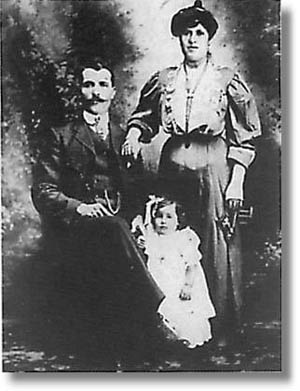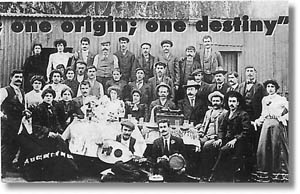By Jimmy Lebos
In this section of the Journal of Maronite Studies (JMS), a Maronite-American family presents its own history of migration to the United States of America. The Maronites in America have a rich history preserved through oral narratives. Valuable historical and cultural details such as reasons for emigrating, means of transport, adjustments in the new country, customs, music, food, etc., are worth recording. These stories represent the views of the author(s). They may be edited for clarity and style. One hundred years on, and our community is still intact, stronger and more cohesive than ever before. What with normally experienced dilution and assimilation among groups of people who integrate, particularly in the case of émigrés in the Western world, we stand out as a people who have remarkably and uniquely retained its heritage, its religious preference and its seemingly indomitable spirit of endurance and permanence. It is an achievement all of us can be most proud of. The first Lebanese Pioneer It was between 1880 and 1885 that the first Lebanese pioneer arrived in the Transvaal. He did not come accidentally, as foolishly suggested by some, having lost direction on his way to America. In fact, he came like thousands of others from Europe and elsewhere because of the discovery of precious stones and minerals at this end of the African continent. As far as is known, he was Elias Mansour Eid from Beit ed Dine who remained in Ferriera's Mining Camp for no more than 10 years because, having amassed a tidy stash of gold sovereigns in that short time, he returned to his hometown. His financial success story inspired hundreds of husbands and fathers, courageous adventurers, to make similar sea voyages on cattle boats sailing between Port Said and Delagoa Bay. Invariably, the immigrants moved on from Mozambique to the Transvaal where they entered the fresh produce business and also became hawkers of goods which were wanted by the outlying farming communities. Most of them, however unskilled and unqualified they undoubtedly were, possessed attributes of enviable wisdom and astuteness that marked them out for worldly success. The husbands and fathers realized that on the Witwatersrand Goldfields they had found a life far more rewarding and better -- and far more tolerant of Christians -- than they had ever known in Ottoman, Muslim dominated Lebanon. Consolidating the Community By about 1895, the first contingent of wives and children -- and even aged mothers and fathers -- arrived to convert, then consolidate the Lebanese immigrants into a settled community, preserving all that they and all Lebanese, before and since their time, have proudly possessed, and they thrived.
Of course, they encountered prejudice, especially of the type that was reserved for "outlanders", but they proved themselves superior to it and overcame it splendidly. They learned the value of strength in unified numbers. The first Association - the Ottoman Syrian Association - was formed as a vigilante body, but it quickly broadened its purpose and did other valuable work as well.
Early Achievements Among a plethora of early achievements, it brought a Maronite priest to this country, leased a corrugated-iron hall in Commissioner Street, Johannesburg and converted it into a makeshift church, thereby establishing the first non-Western Catholic congregation in Southern Africa. The Newtown Government School in Johannesburg produced the future leaders of our people: educated, upright and able to hold their own in almost any situations. The story of our community over the past 100 years reads much like a romance, inspiring at times and, at others, alternately tragic, dramatic or even comedic. There were scandals, but there were heroic chapters as well. There were frequent tragedies, but many occasions for joyous celebration too. Splits occurred, often as the product of malevolence on the fringe of the community, but overall, these troublemakers were eventually found out, and healing and reconciliation followed happily. Preserving our Identity The most remarkable accomplishment by far was our people's retention
and preservation of their identity as a Lebanese community in Diaspora.
Lebanon did not help us with this at all. Indeed, until fairly recently
(when Lebanon discerned the essence of this community), we were very much
a forgotten and grossly neglected people. We may well have lost the gift
of articulation in the Lebanese tongue, but nothing has diluted our entrenched
Lebanese lifestyle. Witness our customs and tradition, our religious observance,
our foods and, above all, our universally acclaimed Lebanese hospitality.
|

